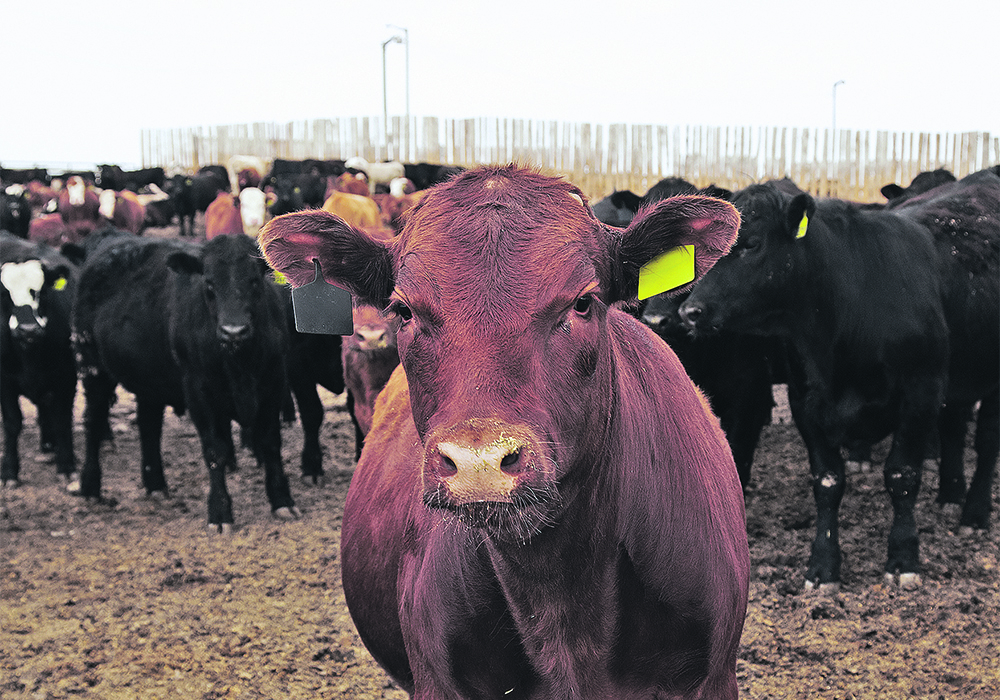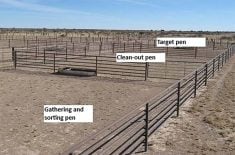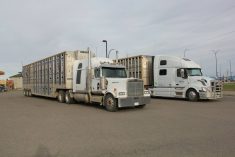Low-stress handling called an important tool that producers can use to improve their cattle’s health
Lee Sinclair’s interest in low-stress cattle handling emerged during a summer job at a feedlot and carried through to his career with Merck Animal Health.
“Nobody had ever told me position, distance and angles make the difference. All we were taught is, ‘we’ve got to get this done’,” Sinclair said of his initial experience working cattle.
Related story: Handling called key to feedlot
Read Also

Quebec pork company calls for transparency around gene-edited pigs
Quebec-based pork company duBreton is calling for transparency around meats from gene-edited pigs on concerns that a lack of mandatory labelling will confuse consumers, and dilute certification claims. The organic sector is also calling for labelling rules.
“So you use your horse as a tool or a hockey stick or a sorting stick or whatever it is, and now we can get it done. But how much pressure and how much stress are we putting on those cattle?”
Sinclair grew up in Lloydminster, Sask., but spent much of his time around livestock and on farms. He was exposed to animal health in his early teens, after his father took a job as a pen rider.
While in post-secondary school, he spent his summers at a feedlot and began considering how cattle were handled.
“I realized there’s got to be a better way to do this,” Sinclair said. “As I’m riding pens, my job is to find sick animals. If you ask the pen rider, ‘what’s your job?’ ‘well, I find sick animals.’
“Well, that’s kind of a self-fulfilling prophecy, in a sense. If we handle those cattle wrong, well, we make sick cattle. So, what I’ve learned is we’ve got to shift our mindset.”
Sinclair said it’s important to understand the source of an animal’s stress. In a feedlot scenario, cattle often arrive at a new place surrounded by unfamiliar animals. Stress is unavoidable.
“Those calves are like … a Grade 9 kid going to high school. He’s not going to walk down the Grade 12 hallway. And now he’s thrown in there with all these different kids. So how do we take that stress off?”
Producers can mitigate it to some degree by making sure new arrivals are promptly fed, watered and rested.
Merck Animal Health has videos on this topic on its website. “Creating Connections” aims to teach stockmanship and educate on its benefits to cattle health. There are videos for feedlot, cow-calf and stocker operations and resources for dairy operations will be available soon.
Sinclair said stockmanship involves visual cues, such as identifying an animal holding its head high. This is a sign of fear or mistrust. He advised taking note of that animal during handling because it often leads the herd.
“She’s telling us we are too close and we need to stop, and we might need to change our body position. … This might be 10 seconds, and that might be enough to just get her to lower her head. Then we can proceed, but now we’re going at a different angle. So every time we see that head come up, we have to shift our angles.”
Handlers often focus too much on sensitive animals and rile them up, he said. They should instead use them to help manage the rest of the group.
Access to water and feed are of primary importance.
“If I get them hydrated, if I get some feed into them, now I’m starting to get production. It’s all about production. We’ve got to get pounds on them.
“Now, as an animal health company, if I get them hydrated, my vaccines are going to work better. I need those cells to be hydrated to pick up those antigens from the vaccine to work. Then, if she’s eating, and my implant is in there, I need nutrients or water to drive that implant as well and build muscle.”
Low-stress cattle handling prevents injury and improves immunity, notes the Merck website. Feedlot pen riders and employees should focus on maintaining good animal health rather than responding to ill or lame cattle.
Sinclair said low-stress cattle handling also helps with the safety and health of employees, minimizing the chance of injury and job frustration.
He advises producers to have empty hands when managing cattle.
“As guys, we’re bad. If we have something in our hand, we’re probably going to use it, and we’re going to overuse it. So, that stick allows us to put more pressure on, whereas when we have to use just our body with no extra stick, now it makes us slow down and think a little more about what we’re doing.”
More information can be found on Merck’s website at creatingconnections.info/videos.


















